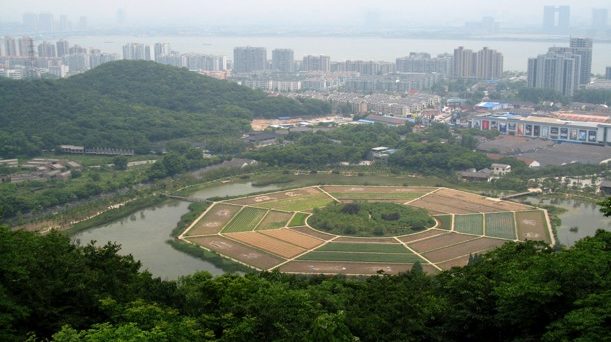
Why landscape sustainability science?
Sustainability is the theme of our time. From academia to societal and political arenas sustainability has become a buzzword. Why is it so? Given the numerous environmental and socioeconomic challenges humanity is faced with, this is more of a necessity than a choice.
Like other fundamental concepts such as freedom, democracy, and justice, sustainability is difficult to be defined specifically. However, its general idea is clear: meeting human needs while maintaining ecosystems, balancing development with conservation, or achieving both intra- and inter-generational equity.
As a concept, sustainability is more useful as a process (a journey) than an endpoint (a destination). A journey without destination is wandering blindly, and a destination without journey means no action. How do we succeed on the journey of sustainability? We need beacons, step-stones, or handles. We need a new kind of science that produces “actionable” knowledge. Sustainability science fits the bill.
Sustainability needs to be achieved globally, but global sustainability has to depend on sustainability at national, regional, and local scales. While all these scales are important, regional landscapes (e.g., metropolitan regions or large geographic areas with multiple local landscapes of different primary functions) provide a pivotal scale domain for studying and practicing sustainability.
Landscapes are land mosaics in which we live, work, and play and through which the local and global processes are bio physically linked. Landscapes provide a common platform for scientists, land designers/planners, policy makers, and stakeholders to collaborate on sustainability issues that matter to all.
What is landscape sustainability science?
If the previous arguments make sense, then a science for landscape sustainability is needed. How should we define such a science so that it can bridge gaps in, and provide handles on, sustainability research on the ground? This was the key question addressed in Wu (2013). Based on a number of key concepts in the recent literature on landscape ecology and sustainability, I defined “landscape sustainability” as the dynamic capacity of a landscape to consistently provide long-term ecosystem services essential for maintaining human well-being in a regional context and in the face of environmental and sociocultural changes. Then landscape sustainability science (LSS) is a place-based, use-inspired science of understanding and improving the relationship between ecosystem services and human well-being in changing landscapes (Wu, 2013).
A key premise of LSS is that the composition and spatial arrangement of the “land mosaic”, which consists of both visible biophysical and invisible socioeconomic patches and networks, affect, and are affected by, flows of organisms, material, energy, and information (i.e., landscape functions). Both landscape structure and functions in turn determine ecosystem services (benefits that people derive from ecosystems). For this, abundant evidence exists in landscape ecology and related fields.

Another premise of LSS is that ecosystem services from a regional landscape are important to human well-being therein. Historically, people have derived most resources for survival from local landscapes. Even for modern urban regions, a diversity of local regulating (e.g., cleaning air, purifying water, and modulating climate) and cultural services (e.g., recreation and aesthetics) are essential to the human well-being of local residents.
Still another premise of LSS is that landscape sustainability can be enhanced by improving landscape patterns through land system design. Much research is needed in this area, requiring collaborations among natural, social, engineering/design/planning sciences, as well as participation from stakeholders. For sustainable land system design to succeed, both bottom-up processes and top-down regulations are essential, and both global and local scales need to be considered.
Moving forward
One may dismiss LSS because most urban landscapes/regions cannot sustain themselves alone. In subsistence economies, people obtain most if not all of their resources for survival locally. The ecological footprint of a modern city, however, greatly exceeds its physical size. So what’s the point to even talk about landscape sustainability (or urban sustainability for that matter)?
In fact, the observation of unsustainable cities and regions is arguably the most compelling reason why we need to study and practice landscape sustainability to minimize regional unsustainability.
If a city relies on distant places for basic human needs, it is unsustainable. To make it more sustainable, its ecological footprint must be reduced. An obvious way to do that is to increase ecosystem services from its region in which the city resides.
Urbanization and globalization have transformed humans as a species and the earth as a planet. The ecological footprint of humanity, from the individual to the global society, has been expanding at an accelerating rate. The trend still continues. In the same time, the identity or distinctiveness of our places and cultures diminishes in many ways. None of these helps our goal of achieving a sustainable future.
Landscape sustainability science does not promote “localization” socially or politically, but it does emphasize both reducing ecological footprints and enhancing ecosystem services from the regional landscape.
LSS aims to provide knowledge for making our landscapes more sustainable in the face of urbanization, globalization, and climate change. As Richard Forman (2014) put it, “Having a city live in balance with resources of its urban region. Or in balance with its present ecological footprint, or even shrinking the footprint.”
Is it possible to have a sustainable world in which nations depend heavily on each other for basic resources for good life? Is it possible to have a sustainable nation in which cities have footprints overlapping or even going beyond its border? Is it possible to have a sustainable city whose life depends on sucking resources from afar? None of these is possible on a time scale that sustainability requires. Then we need to “think like a landscape”!
Read full journal article: Landscape sustainability science: ecosystem services and human well-being in changing landscapes
Jianguo (Jingle) Wu
Latest posts by Jianguo (Jingle) Wu (see all)
- Landscape sustainability science: Why, what, and how in a nutshell - 3rd August 2016